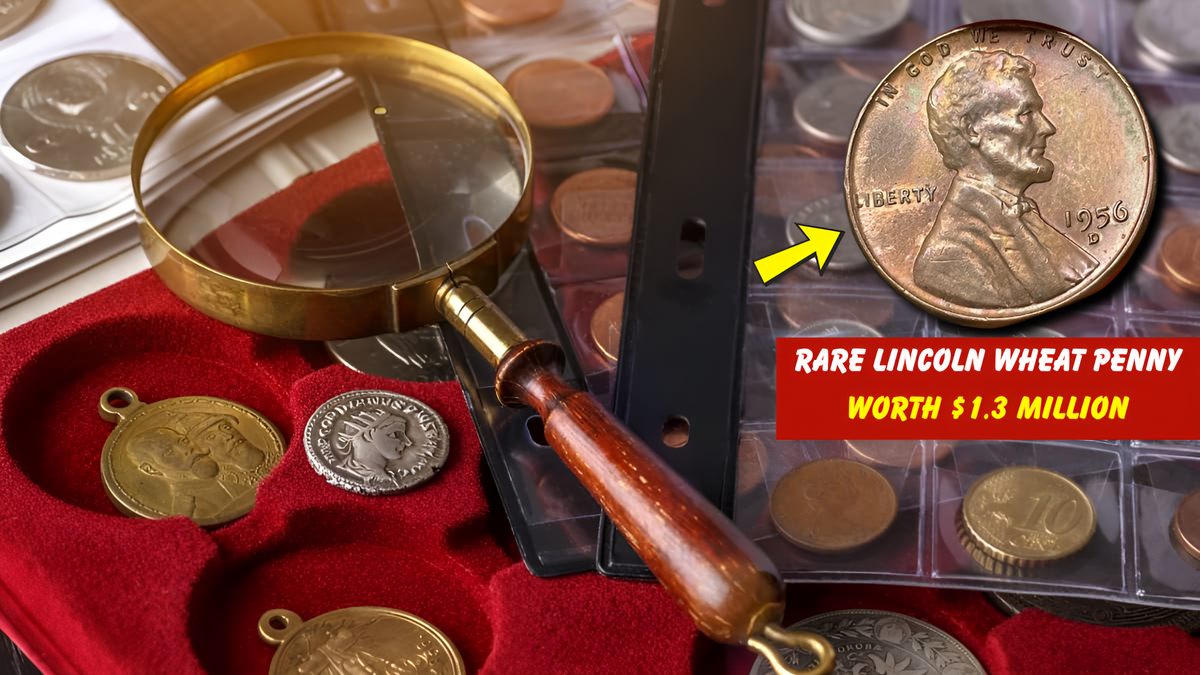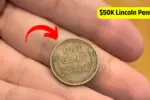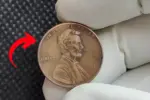The Lincoln Wheat Penny was first introduced in 1909 to commemorate the 100th birthday of President Abraham Lincoln. Designed by Victor D. Brenner, it became the first U.S. coin to feature a real person rather than an allegorical figure. The obverse (front) showed Lincoln’s portrait, while the reverse featured two wheat ears flanking the words “One Cent” giving the coin its iconic nickname: the Wheat Penny.
This design remained in circulation until 1958, after which the reverse was changed to feature the Lincoln Memorial. But among the millions of Wheat Pennies minted, a few rare pieces stand out as treasures including one that could be worth up to $1.3 million.
What Makes a Coin Valuable?
Not every old coin is worth a fortune. In numismatics (the study of coins), a coin’s value is determined by several factors rarity, minting errors, historical significance, condition, and demand among collectors.
Some coins are valuable because only a small number were produced. Others are worth a lot due to errors during the minting process. And in some cases, a coin becomes legendary because of a combination of these factors which is exactly what happened with one rare 1943 Lincoln Wheat Penny.
The 1943 Bronze Lincoln Penny – A $1.3 Million Mistake
During World War II, copper was urgently needed for ammunition and military equipment. As a result, the U.S. Mint decided to make pennies out of steel coated with zinc in 1943. These coins are known as “Steel Cents” and were produced in large quantities.
However, a few bronze blanks from 1942 somehow remained in the machinery when production started. These blanks were accidentally used to strike some of the 1943 pennies creating one of the rarest and most valuable U.S. coins: the 1943 Bronze Lincoln Wheat Penny.
Only about 20 of these coins are believed to exist. One of them was sold at auction for $1.3 million in 2010, making it one of the most valuable pennies in history.
How to Identify a 1943 Bronze Penny
If you want to check your change for one of these rare coins, here’s what to look for:
- Material: The 1943 bronze pennies are made of copper, while the standard 1943 pennies are made of steel coated with zinc. The weight and color of the coin should be noticeably different if it’s a bronze penny.
- The Date: The date on the penny should be 1943 check closely for any signs that it could be a mistaken bronze version.
- The Appearance: The bronze penny has a warm, copper color, whereas the steel penny has a silvery appearance.
If you find a 1943 penny that looks like it’s made of bronze, have it verified by a professional coin appraiser or numismatist to confirm its authenticity.
How Common Are 1943 Bronze Pennies?
The 1943 bronze pennies are incredibly rare. In fact, it’s estimated that fewer than 20 of these coins still exist today. They are considered one of the most famous errors in U.S. coinage history.
While many of these rare pennies have been locked away in private collections, some are still in circulation, just waiting to be discovered. It’s not impossible that one of them might show up in your spare change though it would be a stroke of luck if you happen to find one.
What Other Lincoln Wheat Pennies Are Valuable?
While the 1943 bronze penny is the most famous example, several other Lincoln Wheat Pennies are also highly sought after by collectors. These include:
- 1909-S VDB: The 1909-S VDB penny is one of the most famous and valuable coins in U.S. history. The “VDB” on the reverse side stands for the designer’s initials, Victor David Brenner. The mint mark “S” indicates that it was produced in San Francisco, and only around 484,000 were made.
- 1914-D: The 1914-D penny is another rare and valuable coin due to its low mintage of just over 1 million coins. In good condition, these pennies can fetch thousands of dollars.
- 1922 No D: The 1922 penny is famous for a minting error where the mint mark “D” was missing from some coins. These are extremely valuable, especially in mint condition.
How to Check Your Coins for Value
If you’re interested in checking the value of your coins, there are a few steps you can take:
- Examine Your Coins: Look for dates, mint marks, and any unusual features such as errors or wear patterns.
- Use a Coin Guide: There are many online resources and books that can help you identify valuable coins. Websites like PCGS (Professional Coin Grading Service) and NGC (Numismatic Guaranty Corporation) have detailed price guides.
- Get a Professional Appraisal: If you think you have a rare coin, it’s worth getting it appraised by a professional. A certified appraiser can give you a more accurate idea of its worth.
- Visit Coin Shows: Attending local coin shows or numismatic conventions is another great way to meet collectors and dealers who may help you identify rare coins in your collection.
Conclusion: A Penny Saved Could Be a Penny Earned
The chance of finding a $1.3 million 1943 bronze penny in your pocket may seem slim, but it’s always worth checking your change. You might be sitting on a small fortune without even realizing it.
While finding a rare coin like this is a rare occurrence, the world of numismatics is full of valuable treasures just waiting to be discovered. Whether you’re a collector or just someone hoping to uncover hidden gems in your pocket change, you never know what might be out there. So, the next time you grab some change, take a moment to check you could be holding a piece of history worth more than you ever imagined!
FAQs
What is the Lincoln Wheat Penny and when was it introduced?
It was introduced in 1909 to commemorate Abraham Lincoln’s 100th birthday.
How can I identify a rare 1943 Bronze Lincoln Wheat Penny?
Look for a copper color and weight, indicating it’s a bronze penny from 1943.
How many 1943 Bronze Lincoln Wheat Pennies still exist today?
Fewer than 20 are believed to exist.
What other Lincoln Wheat Pennies are valuable to collectors?
The 1909-S VDB, 1914-D, and 1922 No D are also valuable.
How can I get my coins appraised for value?
Visit a coin appraiser or use online resources for evaluation.



